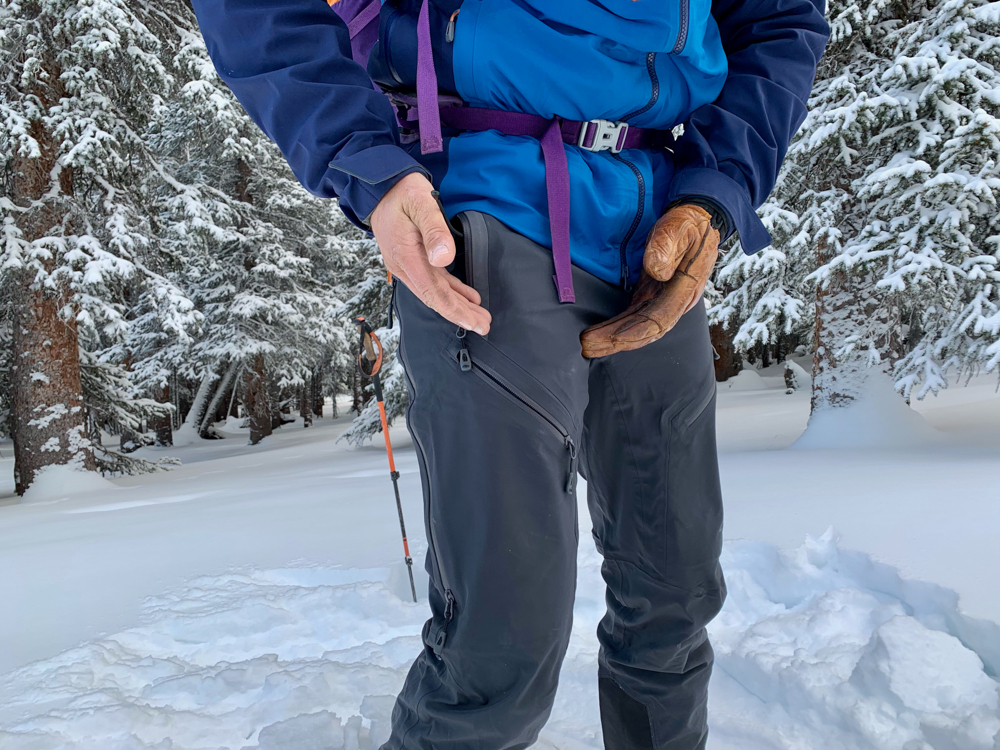How To Clean Your Winter Outerwear
The solstice is upon us! It’s time to celebrate the cold, and dawn the puffy jackets. Winter outerwear is a significant investment, designed to keep you cozy, dry, and comfortable in harsh conditions (or walking the dog) — and it’s not cheap. Cleaning your winter jackets, snow pants, and other cold-weather gear correctly can keep them coming back for years to come. That means less waste in the landfill and less money to spend on new gear. Many people feel intimidated by the idea of cleaning their high-dollar outerwear, afraid you might damage it instead of making it shiny new. With winter in full swing and the holidays just around the corner, there’s a good chance some of you will be gifted new outerwear. Now is the perfect time to learn how to take care of it, or spruce up your old items!

Understanding Your Winter Outerwear
Before diving into the cleaning process, get to know the fabric and features of your winter gear:
- Down insulation: Provides excellent warmth but requires careful washing.
- Synthetic insulation: Easier to clean and more resilient than down.
- Gore-Tex and other waterproof fabrics: Require specific detergents to maintain waterproofing.
- Fleece or softshell fabrics: Generally straightforward to clean.
It should go without saying… but we’re going to say it anyway: always start by checking the care label. The manufacturer provides specific instructions for a reason. Following these guidelines for cleaning and drying your garment is the first and most important step in preserving its performance and durability.

When to clean your outerwear
This may seem obvious but clean your outerwear whenever it looks dirty — and don’t wait too long. You should clean your winter outerwear when it becomes visibly dirty, after a particularly intense activity, and always at the end of the season before storage. However, avoid over-washing as it can reduce the longevity of your gear. There is a fine line! You probably know what the line is. Spot clean whenever possible and save full washes for when it’s truly necessary
Pre-Cleaning Preparation
- Inspect for Damage: Inspect your gear for rips, tears, or broken zippers and repair them before washing. This step is especially critical for down-filled items, as you don’t want your expensive 800-fill power insulation leaking out through a small hole during the wash. If you do find a hole, repair it with a puffy patch before washing.
- Empty Pockets: Remove all items from pockets. The last thing you want is chapstick all over your expensive layers.
- Close Zippers and Fastenings: Close all zippers, Velcro, and snaps to prevent snagging during the wash.
- Read Care Labels: Follow the manufacturer’s guidelines for cleaning and drying.

Washing Guidelines
- Choose the Right Detergent: Use a detergent designed for technical fabrics. Avoid regular laundry detergents, which can strip waterproof coatings or leave residues. Thankfully, there are plenty of great options available—Nikwax, for instance, is a widely trusted choice among outdoor enthusiasts.
- Use a Front-Loading Washer: A front-loading washing machine is gentler on your outerwear than a top-loader with an agitator. Modern top-loading machines without agitators can work just as well (the agitator is the big pole in the middle). If an older top-loading machine is your only option, protect your garments by placing them in a laundry bag before washing.
- Select the Right Cycle: Unless the care label states otherwise, wash on a gentle cycle with cold water to prevent damage to fabric and insulation.
- Avoid Fabric Softeners: Fabric softeners can clog waterproof membranes and reduce breathability.
- Down-Specific Care: If washing down jackets, add a couple of clean tennis balls or dryer balls to the washer and dryer to help fluff the down.
Drying Guidelines
Proper drying is crucial not only to prevent mold and mildew but also to revive the durable water-repellent (DWR) coating on your outerwear. The heat from a tumble dryer can reactivate the DWR, restoring the garment’s ability to repel water. This step ensures your gear will keep on keeping on in wet conditions.
- Tumble Dry on Low Heat: For down jackets, add dryer balls to help redistribute insulation and prevent clumping.
- Air Dry: Lay synthetic or waterproof garments flat to air dry, away from direct sunlight or heat sources.
- Check for Damp Spots: Ensure garments are thoroughly dry before storing to prevent mold or mildew.
Specialized Care
Restoring Waterproofing
Over time, waterproof coatings can wear off. To restore them:
- Use a spray-on or wash-in waterproofing product designed for your gear.
- Apply the product after cleaning, following the manufacturer’s instructions.
Dealing with Extra Smells
Sometimes all it takes is leaving your gear out in the sun (but not wet) for a few hours to get it smelling fresh again. For stubborn odors, soak your gear in a mixture of water and specialized odor-eliminating cleaner before washing. Avoid using vinegar or baking soda, as these can damage technical fabrics.

About the Gear Tester

Ben Dawson
Ben Dawson is a full-time #vanlifer, father, and adventure journalist/photographer based in the western United States. He has a passion for conservation and spends most of his time creating content for various brands in the outdoor space. Connect with him on Instagram at @meetme_onthe_mountain











